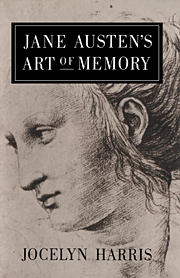Book contents
- Frontmatter
- Contents
- Preface
- 1 Northanger Abbey
- 2 The return to Richardson
- 3 Sense and Sensibility
- 4 Pride and Prejudice
- 5 Mansfield Park
- 6 Emma
- 7 Persuasion
- Conclusion: ‘Nothing can come of nothing’
- Appendix 1 The History of Sir Charles Grandison
- Appendix 2 Sir Charles Grandison in the juvenilia
- Notes
- Bibliography
- Index
4 - Pride and Prejudice
Published online by Cambridge University Press: 18 August 2009
- Frontmatter
- Contents
- Preface
- 1 Northanger Abbey
- 2 The return to Richardson
- 3 Sense and Sensibility
- 4 Pride and Prejudice
- 5 Mansfield Park
- 6 Emma
- 7 Persuasion
- Conclusion: ‘Nothing can come of nothing’
- Appendix 1 The History of Sir Charles Grandison
- Appendix 2 Sir Charles Grandison in the juvenilia
- Notes
- Bibliography
- Index
Summary
Odd though it seems, Jane Austen probably worked up Pride and Prejudice and Mansfield Park at much the same time. Certainly her mind was as full of Sir Charles Grandison when she wrote the one as when she wrote the other. I shall show first how the light, bright, and sparkling Pride and Prejudice substitutes density and relation for the diffuseness of Richardson. Sometimes critically but often not, she seizes upon his detail, combines, separates and varies it, and makes it hers.
A new set of company
Though written in Richardson's old age, Sir Charles Grandison displays a surprising abundance of invention. What he discarded Jane Austen pounced on, for almost the entire cast of Pride and Prejudice lay to her hand in the third letter of his book. Casting about for a subject, he had introduced Harriet Byron to ‘a new set of company’ (1.44), soon to be shouldered out by the Grandisons. These lively sketches Jane Austen profitably developed. I shall show what she made of her plunder in the secondary characters first.
To begin with the Bingleys. Richardson's Mr Singleton, ‘in possession of a good estate’, a man good humoured, humble, modest, ready to confess an inferiority to every one, with smiles and laughs at the service of every speaker, has ‘rare fun at the dinner’, and elaborates admiringly on the attractions of all the guests, especially Miss Byron (1.42, 72).
- Type
- Chapter
- Information
- Jane Austen's Art of Memory , pp. 84 - 129Publisher: Cambridge University PressPrint publication year: 1989



